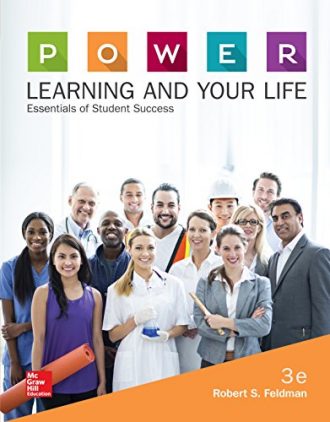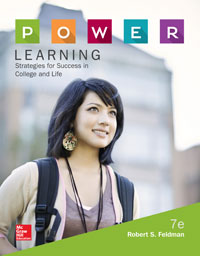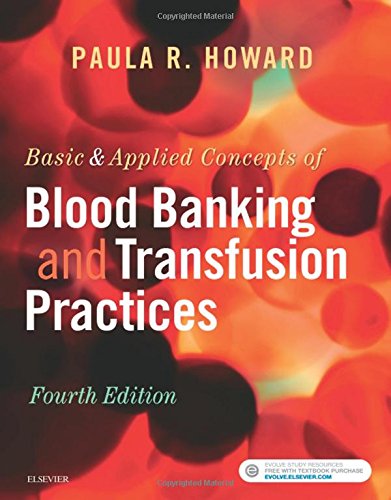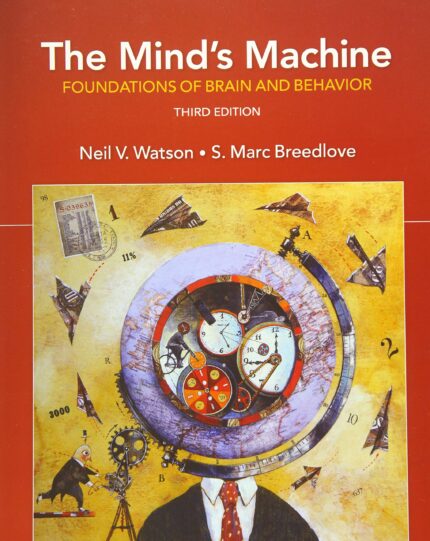P.O.W.E.R. Learning and Your Life Essentials of Student Success 3rd Edition by Robert Feldman – Test Bank
Chapter 03
Taking Notes
Multiple Choice Questions
|
1. |
It is important to complete all assignments before coming to class A. to make a favorable impression on the instructor. B. to ensure a higher course grade. C. because lectures are usually based on the assigned material. D. so you won’t have to take notes during the lecture. |
|
2. |
Prior to class, skimming your notes from the last lecture and reviewing the summary section of your assigned reading is A. making a favorable impression on the instructor. B. performing a pre-class warm-up. C. ensuring a higher course grade. D. using the Cornell method of note-taking. |
|
3. |
Lectures are typically based on your weekly assignments; therefore, A. you should complete your assignments prior to attending class. B. write down everything your instructor says. C. identify the meta-message. D. avoid using the Cornell method. |
|
4. |
Using a loose-leaf notebook for taking notes allows you to A. use the Cornell method of note-taking. B. give your notes to your friends. C. change the page order if necessary. D. retype your notes into your laptop. |
|
5. |
One of the benefits of taking your textbook to class is A. you can clarify the meta-message. B. you can ignore the lecture. C. you can add material to it. D. you can use it to look up key terms. |
|
6. |
One of the guidelines to make the most effective use of your laptop to take notes is to A. type everything your instructor says. B. avoid the temptation to surf the Internet. C. use Microsoft Excel to take your notes. D. use abbreviations. |
|
7. |
The involuntary act of sensing sounds is referred to as A. active listening. B. meta-messaging. C. hearing. D. sensing. |
|
8. |
Which of the following is considered a good note-taking tip? A. Use both sides of the paper. B. Try to write down everything your instructor says. C. Use complete sentences. D. Use abbreviations. |
|
9. |
Using abbreviated phrases is an example of A. hearing what the instructor says. B. active listening and thinking. C. a good note-taking tip. D. notating the meta-message. |
|
10. |
Using indentation to indicate a relationship among concepts is referred to as A. writing the meta-message. B. taking notes in an outline form. C. the Cornell method of note-taking. D. copying the PowerPoint presentation. |
|
11. |
While in class, focus on the projected PowerPoint slides and A. listen to the lecture, don’t take notes. B. avoid copying formulas. C. add definitions and formulas to your notes. D. record the lecture. |
|
12. |
According to the text, the most important aspect of taking notes is A. understanding the instructor’s goals. B. using complete sentences. C. hearing what the instructor says. D. active listening and thinking. |
|
13. |
Actively listening and thinking during a lecture is A. an example of taking notes in an outline form. B. the most important aspect of taking notes. C. hearing the meta-message. D. a good way to balance your listening and note-taking skills. |
|
14. |
The underlying main idea of a lecture, or the meaning behind the overt message you hear, is referred to in the text as the A. outline. B. meta-message. C. key concept. D. significant topic. |
|
15. |
The meta-message is A. the examples on the instructor’s PowerPoint slides. B. the supportive materials in a course. C. what you recall from your reading. D. the meaning behind the instructor’s message. |














Reviews
There are no reviews yet.